Contents
Durga Puja 2024: Exploring Kolkata’s timeless Bonedi Bari festival
Held in the ancestral homes of the city’s elite families, these celebrations offer a glimpse of Kolkata’s rich cultural heritage
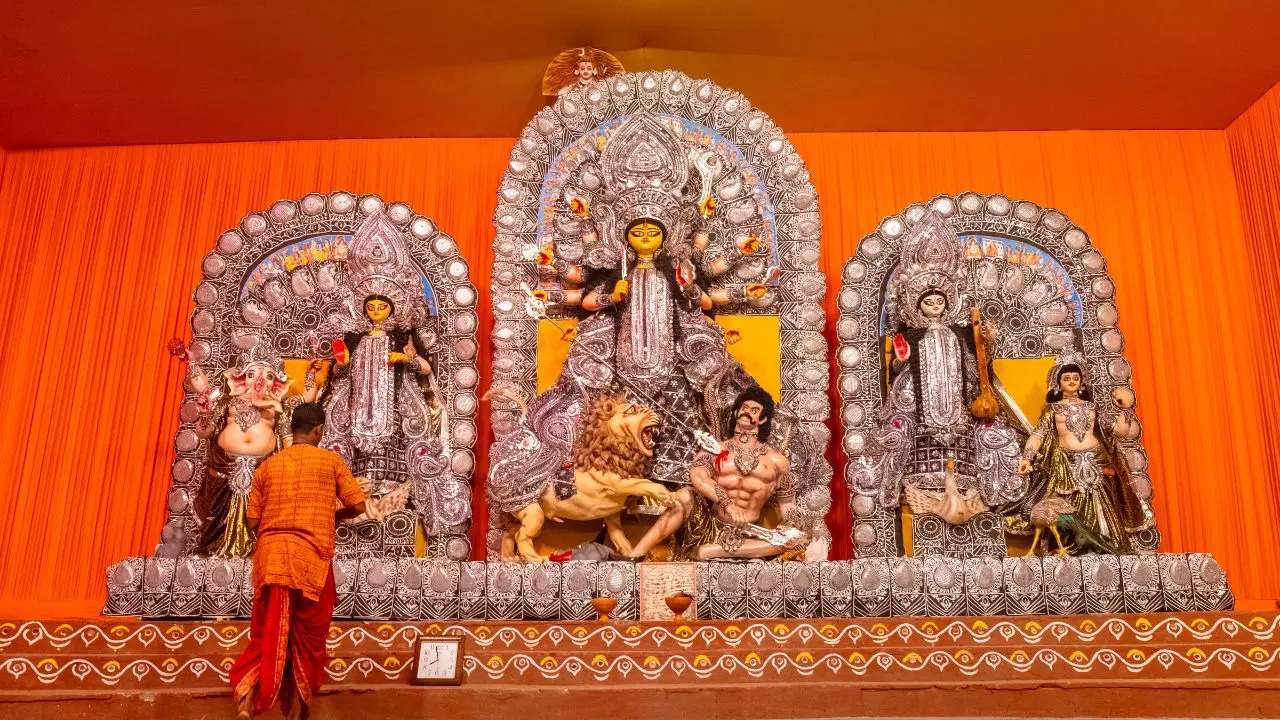
Exploring Kolkata’s timeless Bonedi Bari ceremony. Credit: Canva
As Durga Puja As one approaches, the palatial mansions of Kolkata’s old aristocratic families transform into vibrant centers of celebration, each with a unique history and charm. In a city that is rapidly evolving with time, these timeless places are a must visit during the festivities to soak in the effortless charm of Uma’s homecoming.
sabarna roy choudhary family
Place: Barisha, South Kolkata
Significance: Oldest Durga Puja of the city
One of the must-see houses is that of the Sabarna Roy Chowdhury family in Barisha, which organizes the oldest Durga Puja in the city dating back to 1610. This family played an important role in the establishment of Calcutta, and their beautifully decorated ‘Thakur Dalan’ is framed by beautiful pillars.
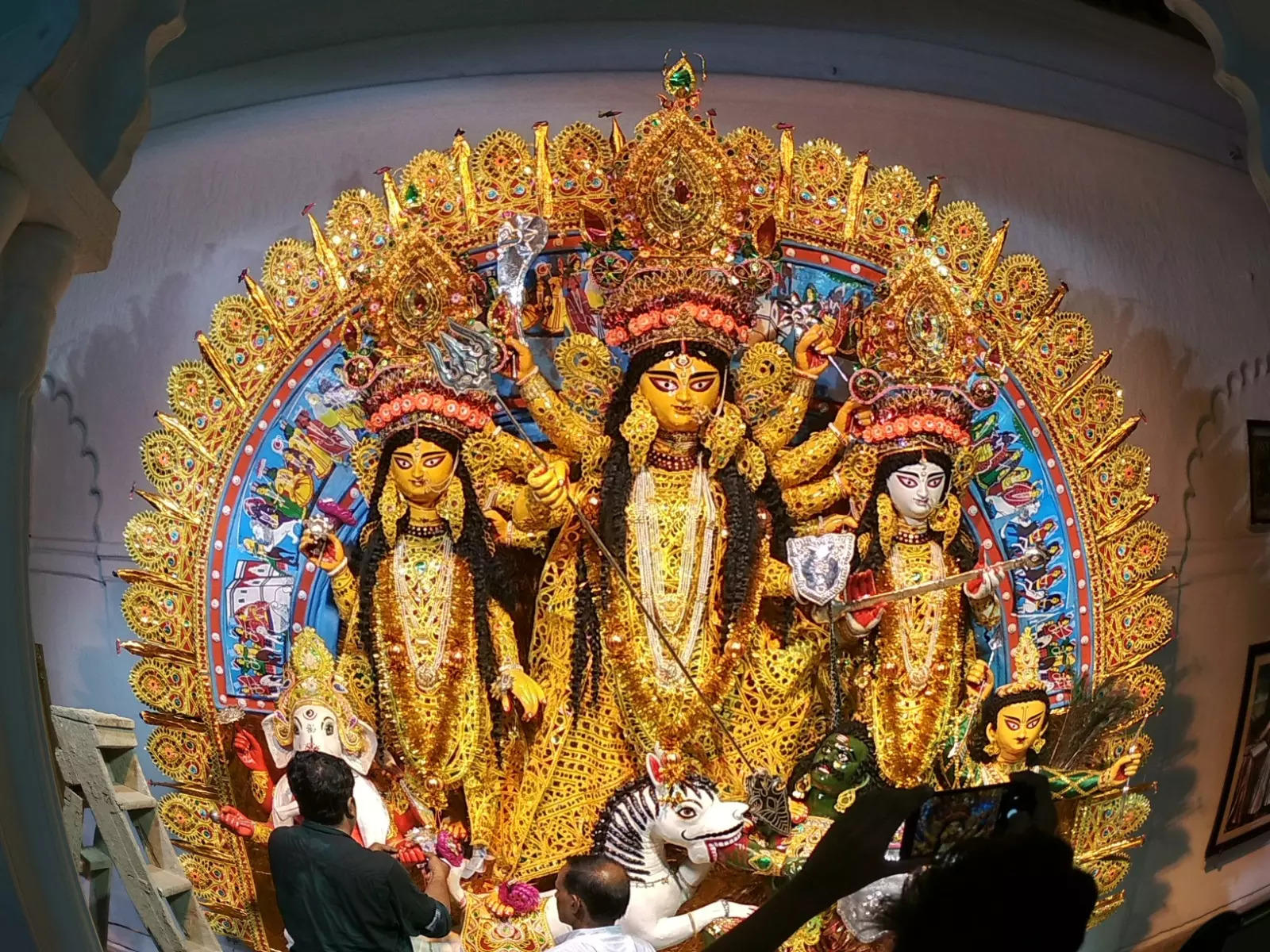
Raja Nabakrishna Deb Family
Place: Sovabazar Rajbari, North Kolkata
Significance: Known for its unique history of including the first instance of non-Hindus attending a Hindu domestic celebration in 1757.
There is a fascinating development of a horse-faced lion and ritual sacrifices in the Raja Nabakrishna Deb family at Sovabazar Rajbari in North Kolkata.
Radha Gobinda Malik Family
Place: Bhawanipur, South Kolkata
Significance: Established in 1860, the family has modern connections through local film stars.
This homely Durga Puja has gained popularity thanks to the famous father-daughter film star duo, Ranjeet and Koel Malik.
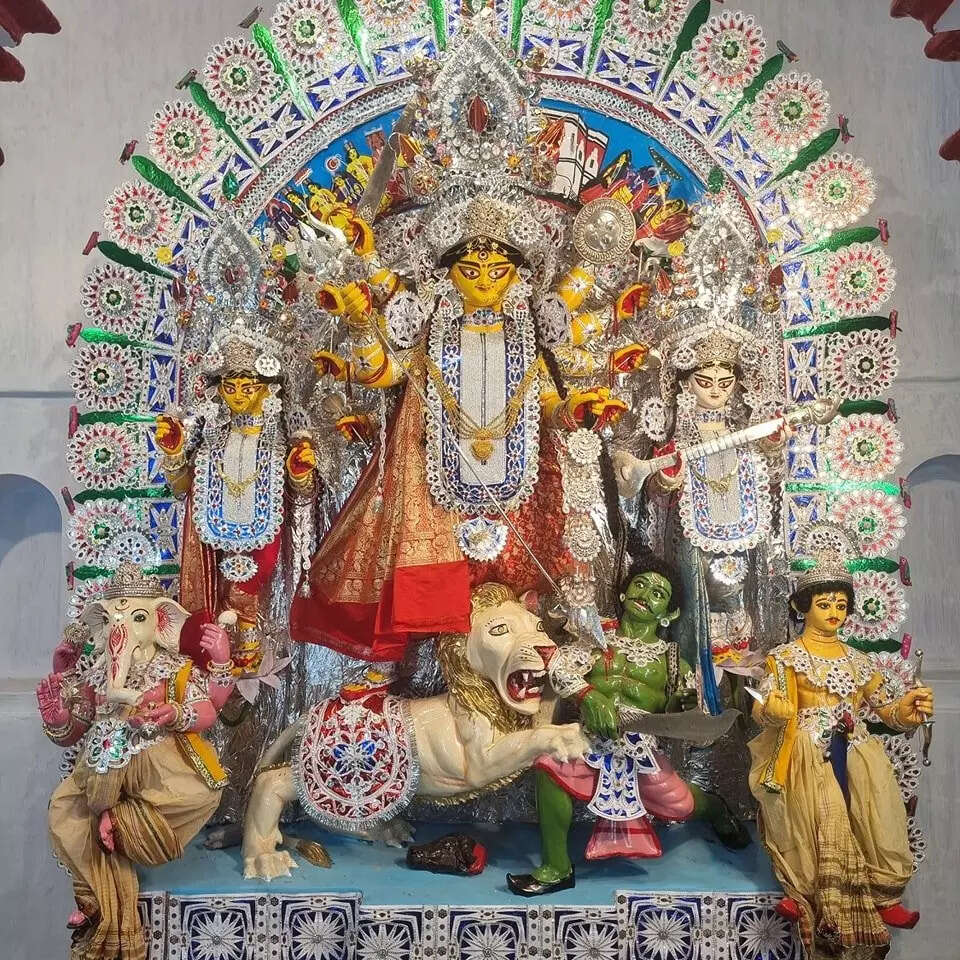
Rani Rashmoni Family
Place: Janbazar, Central Kolkata
Significance: Established by the legendary queen Rashmoni, who is known for establishing the Dakshineswar Kali temple.
After his demise, the puja was performed by the families of his daughters. Now divided into two parts, accessible through the Free School Street entrance, the Durga Puja was initiated by the Queen herself.
badan chandra roy family
Place: Kolutola, Central Kolkata
Significance: One of the best preserved residences, with a history linked to local medical establishments.
At Kolutola, the Badan Chandra Roy family performs a 166-year-old pujo in one of the best preserved residences, where symbolic fruit sacrifices are made in a grand arched ‘Thakur Dalan’.
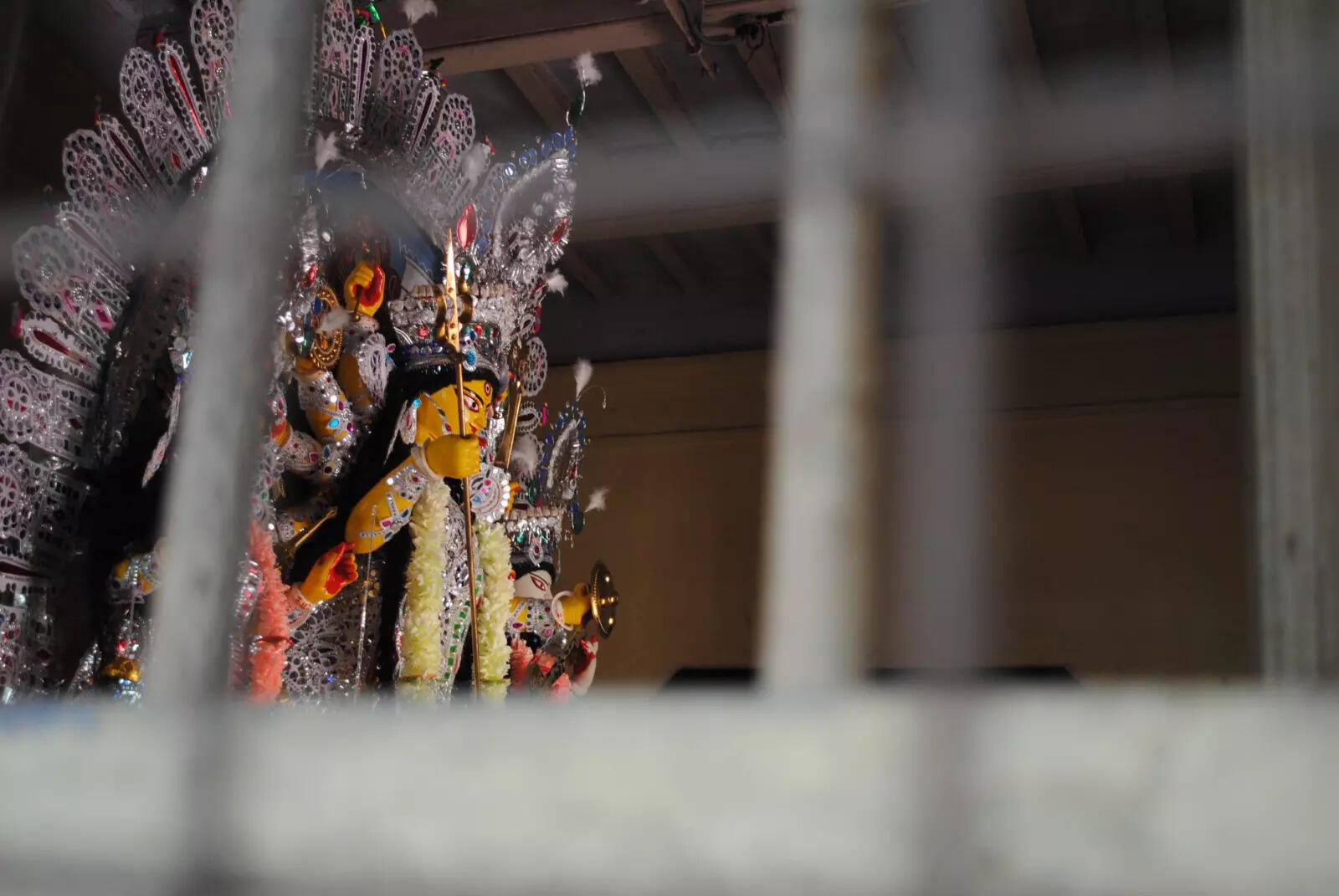
Purnendu Chandra Dhar family
Place: Near Badan Chandra Rai’s house
Significance: The puja has a unique twist, in which Maa Durga is worshiped in her Abhaya Maa form.
The Purnendu Chandra Dhar family celebrates a specific form of worship of Maa Durga, in which she is depicted as Abhaya Maa with two hands, surrounded by her children.
Khelat Ghosh family
Place: Pathuriaghata, North Kolkata
Significance: Home to one of the grandest ‘Thakur Dalans’ of the city.
The Khelat Ghosh family at Pathuriaghata boasts of one of the grandest ‘Thakur Dalan’ in the city, the impressive marble corridor spanning over 80 feet, leading to the grand dance hall, now known as the Khelat Ghosh Memorial Hall. Is known. Here, the Naba Patrika, or bath of nine leaves, is performed on site. Additionally, there is a cherished tradition of offering homemade sweets to the Mother Goddess during the festival.
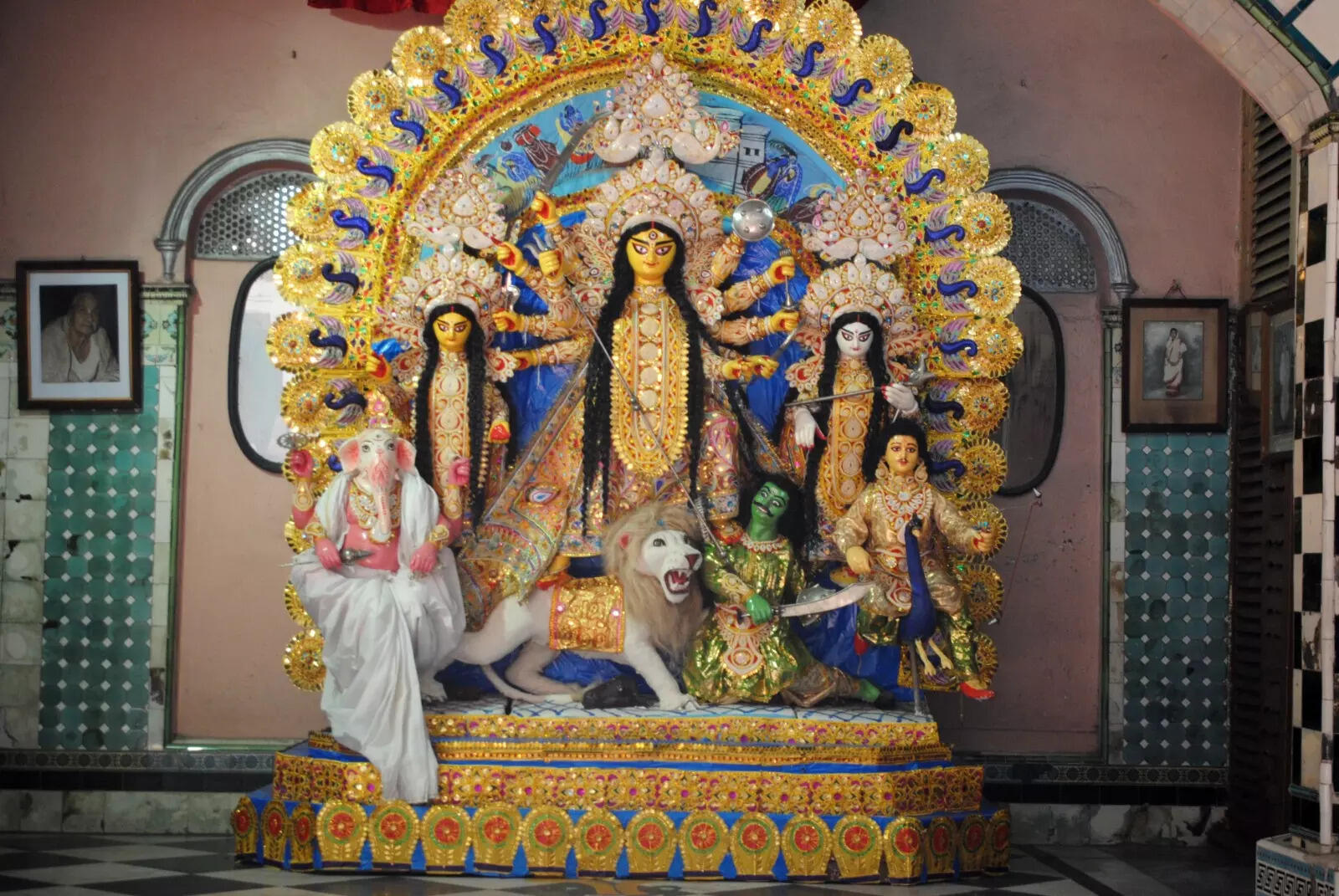
shibakrishna dau family
Place: Jorasanko, North Kolkata
Significance: Started in 1840 and is known for its fascinating ceremonies.
The domestic puja dates back to 1840, initiated by Shibakrishna Dau’s father, but it was Shibakrishna, a successful businessman, who later added glitz and glamor to the celebration. Tourists come to admire the fascinating festivals and intricately decorated sculptures.
Also read: Iconic Durga Puja pandals of 2024: A journey through art, culture and devotion
chandra family
Place: couples
Significance: This tradition, established by Subal Chand Chandra in 1761, continues with unique rituals.
Here Goddess Durga is seen sitting in the lap of Lord Shiva in a confident posture. Subal Chand Chandra started Durga Puja in his Jorasanko house in 1761.
Bhukailash Rajbari
Place: Khidirpur, West Kolkata
Significance: With a history of 300 years, this house is known for its unique Shiva temples.
This traditional house is mainly recognized for its twin Shiva temples built in 1781. One Shiva-lingam is 15 feet long, while the other is 12 feet in height. However, they do not worship the usual clay idol and instead keep an Ashta-dhatu idol.
Get the latest news live on Times Now with breaking news and top headlines from destinations, travel and around the world.
end of article


